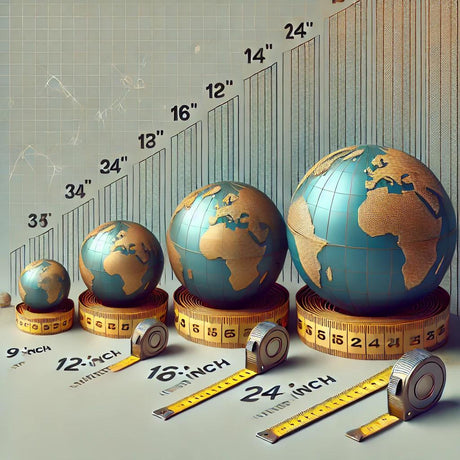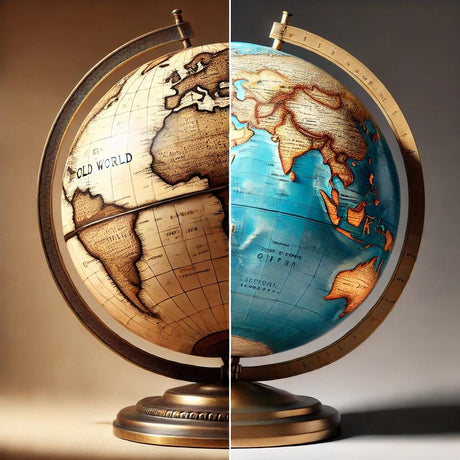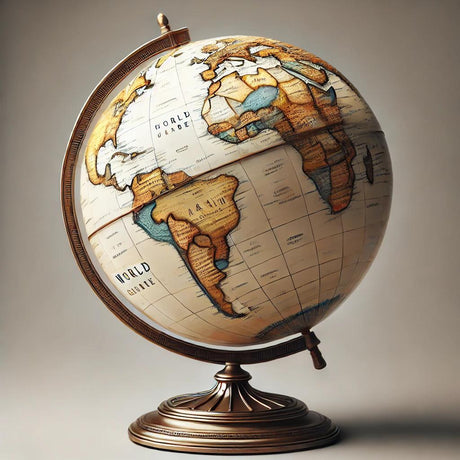A desktop world globe can serve as a captivating centerpiece in any home or office, offering a glimpse into the wonders of our planet. However, with a wide array of options available, it's essential to consider several factors before making your purchase. In this article, we will delve into the top considerations when buying a desktop world globe, empowering you to make an informed decision and select a globe that meets your specific needs.
1. Size and Design:
First and foremost, evaluate the available space where you plan to display your desktop globe. Consider the dimensions of the globe itself, as well as the stand and base. Ensure that it fits comfortably on your desk or table without overwhelming the surrounding area. Additionally, pay attention to the design elements, such as color scheme and aesthetics, to find a globe that aligns with your personal style and complements your existing decor.
2. Geographic Detail:
The level of geographic detail is a crucial factor when choosing a desktop globe. Some globes offer a basic representation of continents, countries, and major cities, while others provide intricate cartographic details such as topography, ocean currents, and even political boundaries. Consider your purpose for the globe—whether it's for decorative purposes or educational exploration—and choose the level of detail that matches your interests and requirements.
3. Mapping Accuracy:
Accuracy is paramount when it comes to the quality of a desktop globe. Ensure that the globe you select provides precise cartographic information, accurately depicting countries, borders, and cities. Verify that the globe utilizes up-to-date data to reflect the most recent changes in geography and geopolitical boundaries. This aspect is particularly important if you intend to use the globe for educational purposes or as a reference tool. When the currency of the globe is important to you, we suggest Waypoint Geographic and Replogle Globes branded products. These globes are not only produced with current details but also have updatable globe programs in which you can purchase an updated globe ball to keep your globe up to date.
4. Illumination and Features:
Many desktop globes come with additional features that enhance their functionality and visual appeal. Consider whether you prefer a globe with built-in illumination, allowing you to enjoy it in low-light conditions. Explore options with adjustable brightness levels to suit your preferences. Some globes also incorporate other functionalities, such as raised relief, time dials, or educational tools like augmented reality apps. Determine which features are important to you and select a globe that offers the desired capabilities.
5. Material and Durability:
The material and construction of the desktop globe significantly impact its durability and longevity. Opt for a globe made from high-quality materials, such as acrylic or sturdy plastic, ensuring it can withstand regular handling and is resistant to wear and tear. Pay attention to the quality of the stand and base as well, as they provide stability and support for the globe. A well-crafted and durable desktop globe will continue to inspire and fascinate for years to come.
6. Price and Budget:
While exploring the options available, consider your budget. Desktop globes vary in price, depending on factors such as size, detail, features, and brand reputation. Determine how much you are willing to invest and find a balance between the desired features and affordability. Conduct thorough research on different brands and models, read customer reviews, and compare prices to make a well-informed decision that aligns with your budget.
By carefully considering factors such as size and design, geographic detail, mapping accuracy, illumination and features, material and durability, and price, you can confidently choose the perfect desktop world globe. Let this captivating piece of geography not only serve as a decorative element but also as a source of knowledge and inspiration, fueling your curiosity about the world we inhabit.




